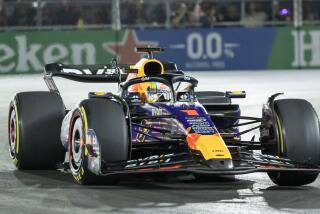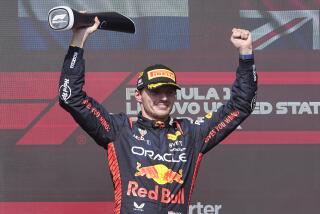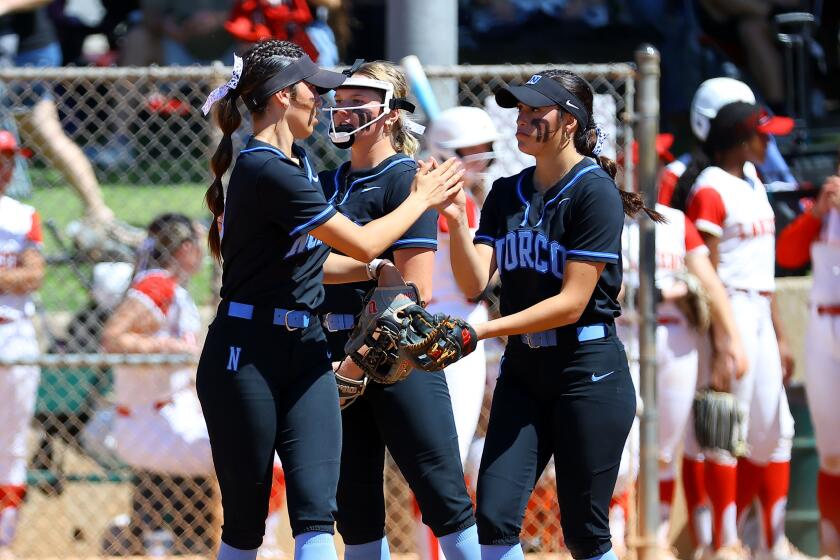F1 driver Max Verstappen wins second consecutive Austrian Grand Prix

- Share via
Reporting from SPIELBERG, Austria — Max Verstappen won the Austrian Grand Prix for a second consecutive year on Sunday as Red Bull ended Mercedes’ unbeaten streak this season.
The Dutchman recovered from a poor start to work his way up to the front of the pack from eighth place, and overtook leader Charles Leclerc in a Ferrari with just two laps to go.
However, stewards were investigating Verstappen’s move to pass Leclerc as both cars touched.
Starting from pole position for the second time in his career, Leclerc almost led the race from start to finish but ended up just missing his first career win.
Leclerc and Verstappen started the race 1-2 and, at an average age of 21 years, 265 days, they made for the youngest front row ever in a F1 race.
Mercedes driver Valtteri Bottas completed the podium, ahead of Ferrari’s Sebastian Vettel and championship leader Lewis Hamilton, who started fourth and lost time to replace the front wing of his Mercedes after 31 laps and finished fifth.
Hamilton posted the second-fastest time in Saturday’s qualifying but was given a three-place grid penalty for impeding Alfa Romeo’s Kimi Raikkonen. He started fourth as fifth-ranked Kevin Magnussen also lost five places for changing the gearbox in his Haas.
Sign up for our daily sports newsletter »
Verstappen seemed to lose hope of a repeat of last year’s triumph when his Red Bull barely moved as the lights at the start switched to green. He immediately lost six places and complained over the team radio about “clipping,” hinting at a lack of power likely due to a hydraulic issue.
Verstappen needed until the 10th lap to get back to fifth, after both Mercedes cars and the Ferraris.
Battling for victory with Leclerc at the end, Verstappen had the advantage of fresher and thus quicker tires.
In what was widely regarded as a risky strategy, Ferrari started on the soft tires while Red Bull and Mercedes opted for the medium compound.
While the tires helped Leclerc hold on to his lead at the start, they were affected more by the heat than the medium ones on the Red Bull cars.
While Leclerc switched to the hard tires in lap 22, Verstappen pitted 11 laps later and the newer tires gave him an edge in the final laps.
With track temperatures reaching 51 degrees Celsius (123 F), tire management was always going to be a key factor in the race.
At 4.3 kilometers (2.7 miles), the Spielberg track is among the shortest in Formula One. With inclines of up to 12 percent, it includes just 10 turns and four long straights, favoring cars like Ferrari with good traction and straight-line speed.
More to Read
Go beyond the scoreboard
Get the latest on L.A.'s teams in the daily Sports Report newsletter.
You may occasionally receive promotional content from the Los Angeles Times.










